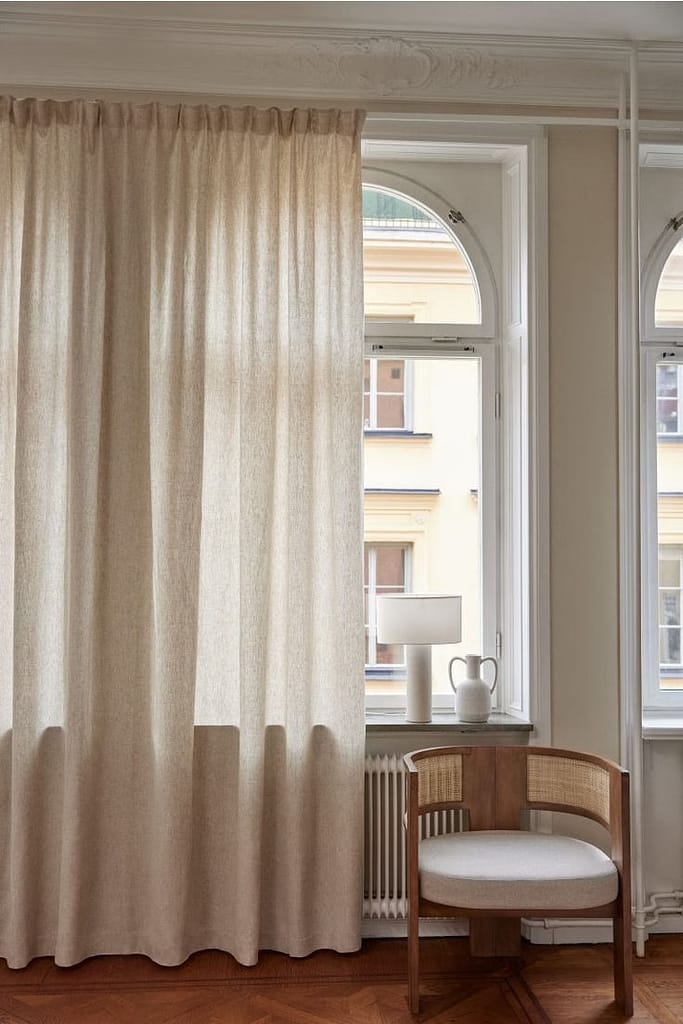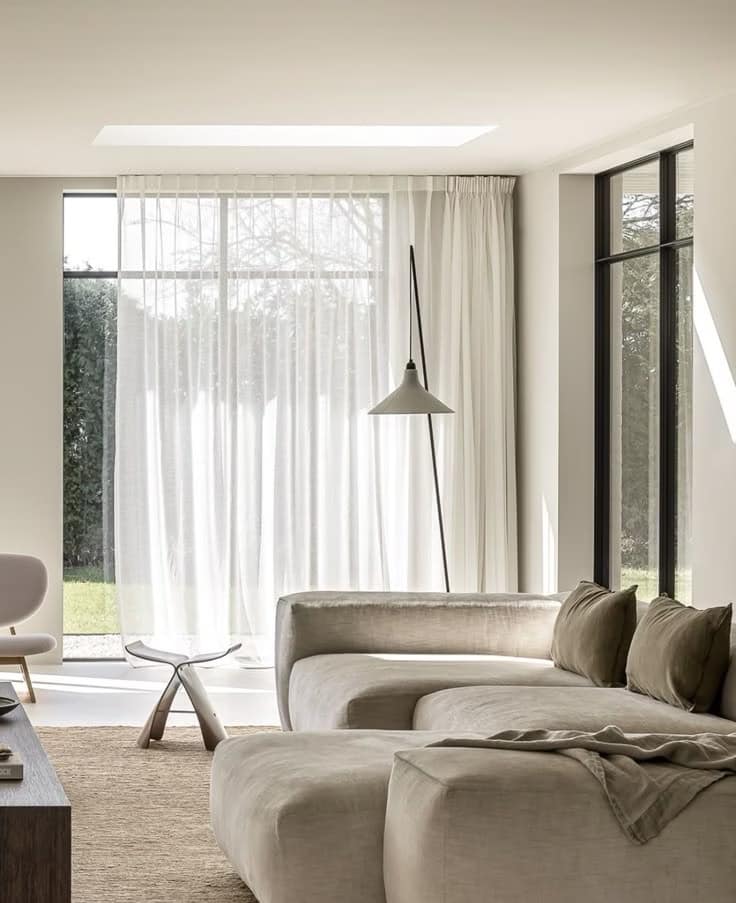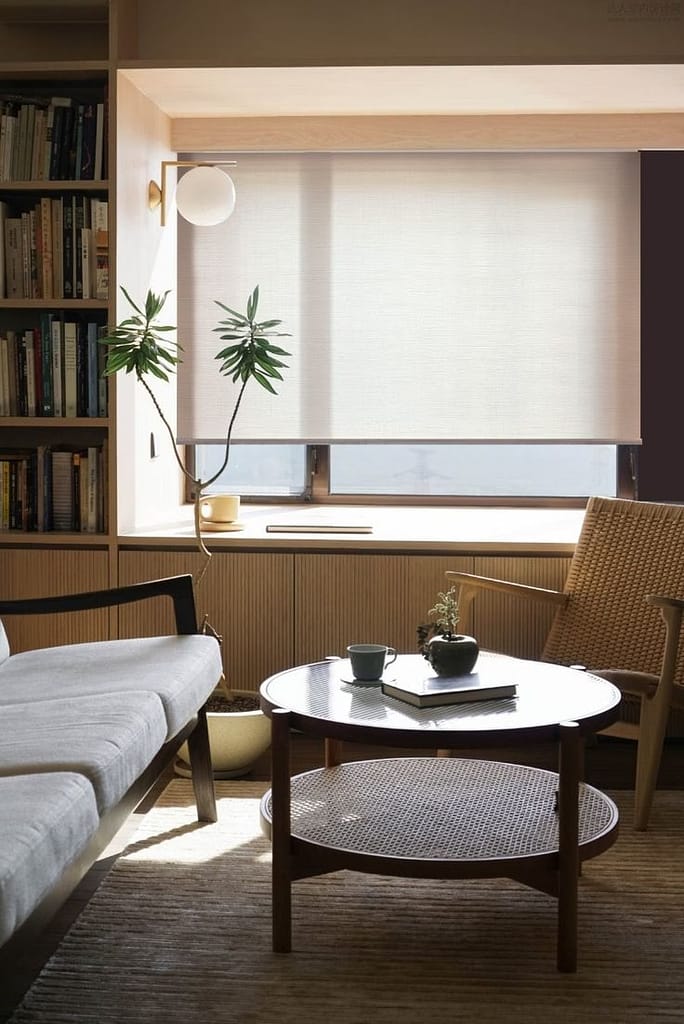Last Updated on February 3, 2025 by Tanya Janse van Rensburg
When it comes to window coverings, curtains and blinds come to mind.
Choosing any of these strongly impacts your windows' appearance.
These offer specified advantages, light-controlling features, privacy, and insulation.
That’s because the right window treatment is necessary. After all, it’s more than just an aesthetic matter.
Keeping this in view, we decided to make a clear and detailed comparison between curtains and blinds.
However, if you have already finalized the right window covering for your home, contact Lush Loom.
It's one of the best window curtain shops in Dubai providing all types of customized drapes to you.
However, let’s get back to the curtain vs. blinds debate.


We’ll compare both popular window shades on different parameters to see their maximum advantages and limitations in different situations.
Curtains can be obtained in different heavy to lightweight fabrics keeping the light control and privacy needs in mind.
Some blackout curtains can completely block light, while sheer curtains can diffuse or soften it.
But they might not be aligned to different angles or positions like Dubai Blinds.
With blinds, you can precisely control sunlight rays coming into your space.
You also have complete control over adjusting their slates to different positions.
This feature makes blinds stand out in Dubai’s hot climate.
| Curtains | Can completely block light or diffuse it. |
| Blinds | Precise control over light with slat positions. |

Curtains have soft textures, and they feature different pile heights.
They also have dense fibers where dirt, dust, stains, and spills can easily accumulate.
That is why curtains require regular vacuuming and cleaning to sustain shine and appearance.
In comparison to these, blinds can be easily cleaned. They have rough, plain, or textured surfaces; you can coat them for smooth finishes.
Due to this, blinds show dirt and stain resistance and can be easily cleaned with a damp cloth.
| Curtains | Slightly tough to clean and maintain. |
| Blinds | Easy to clean and maintain compared to drapes. |
Both the curtains and blinds offer superior insulation, but it depends upon their material.
Heavyweight drapes create an effective barrier against air, heat, and temperature than sheer curtains. That’s what same in the case of blinds.
If you get blinds in thick materials, obviously they’ll offer UV-reflecting properties.
You also need to choose the right slat size and style in blinds for better thermal efficiency.
For example, honeycomb blinds offer better thermal efficiency with their unique cellular structure.
| Curtains | Thick curtains when properly covering windows offer insulation. |
| Blinds | Wide slat blinds with no gaps offer better insulation properties. |

Thick and tightly woven curtain fabrics create folds and certain air pockets that trap high-frequency sound waves.
That’s how curtains contribute to dampening sound and resisting noise production.
In the case of blinds, they feature specific acoustic materials such as foam lining, wood, aluminum, and PVC.
Also, they focus on unique cellular structures such as honeycombs to maximize sound absorption to dampen or reflect.
| Curtains | Offer sound insulation only when they are thick and well-lined. |
| Blinds | They offer better noise reduction with adjustable slats. |
It’s a controversial debate; curtains and blinds both enhance the aesthetics of your home.
Curtains can be printed, textured, or patterned to meet individual styling needs. They can be shaped into any decor theme.
However, blinds add a touch of cleanliness and sophistication to your space.
They might be your ideal choice if you prioritize a simple and sleek room appearance.
It’s purely your decision, but keep in mind that curtains offer more customizations than blinds overall.
| Curtains | Hundreds of customization options to enhance curb appeal. |
| Blinds | Simple and elegant but with less customization flexibility. |

Blinds are more long-lasting than curtains because they are made with harder materials such as hardwood, engineered wood, vinyl, or metals.
They withstand wear conditions and offer anti-discoloration in prolonged sunlight exposure if coated well.
In contrast, curtains might require extensive care to offer longer durability.
You must prevent them from being stained or care for their regular vacuuming or washing.
If they’re not coated with specialized materials, they might adopt dirt or start fading which causes degradation.
| Curtains | Slightly less durable than blinds. |
| Blinds | Highly durable in comparison to curtains. |

It’s a clear-cut pick: blinds are easier to install than curtains because require less complex installation hardware. Experts can precisely mount them to your windows keeping your preferences.
In the case of curtains, you need to deal with rods, panels or tracks, holdbacks, finals, and brackets.
Plus, you deal with the technicalities such as hardware selection considering fabric weight.
| Curtains | Complex to install because of extensive hardware options. |
| Blinds | Easy to install compared to the curtains. |
The pricing of curtains and blinds varies depending on the material, style, and bespoke requirements.
The length and size significantly matter because it widely contributes to the pricing of these window coverings.
In our opinion, you should also consider the installation cost of both of these.
It truly evaluates the overall cost from purchasing window coverings to having them fixed on your windows.
| Curtains | Might be more expensive to install than blinds. |
| Blinds | A slightly less expensive window treatment. |

To sum up this article, we made a clear comparison between curtains and blinds on various parameters.
We found that blinds offer precise control over light and are easier to clean than curtains. In contrast, heavyweight drapes offer better sound and heat insulation.
They often come up in hundreds of customization options rather than blinds.
In terms of affordability, blinds might be more budget-friendly.
This is because you don’t need to invest in luxury fabrics or tackle complex installation costs.
Lastly, both offer longer durability depending upon the quality of material, care, and personalized maintenance.